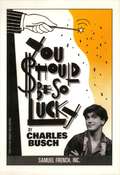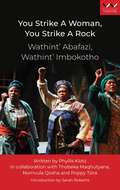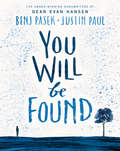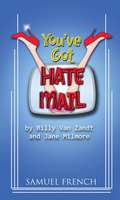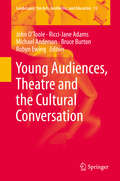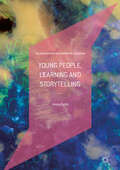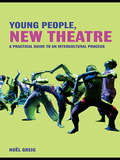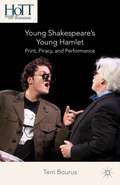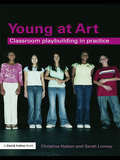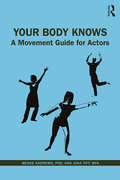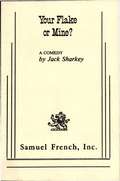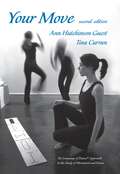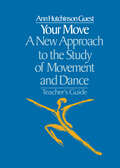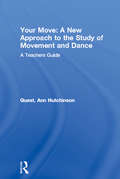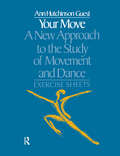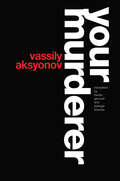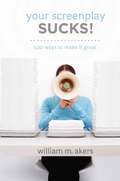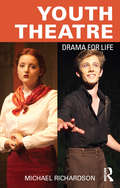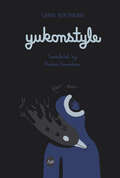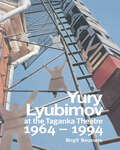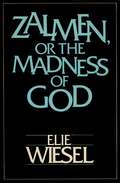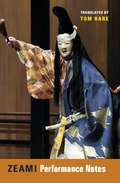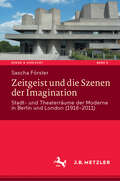- Table View
- List View
You Should Be So Lucky
by Charles BuschComedy / 3m, 3f / Interior / Here is a screwball comedy by the author of Vampire Lesbians of Sodom, Psycho Beach Party, and Red Scare on Sunset, among others. A timid young electrologist's act of altruism leads to a ten million dollar inheritance, but only after he accidently shocks his benefactor, the elderly Mr. Rosenberg, causing a fatal heart attack. Rosenberg's fiercely materialistic daughter resents sharing her inheritance with Christopher and they do battle on the Oprah like Wanda Wang Show. The plot becomes even more outrageous when Christopher's flamboyant sister and Mr. Rosenberg's ghost appear.
You Strike a Woman, You Strike a Rock / Wathint’ Abafazi, Wathint’ Imbokotho: A play
by Phyllis Klotz Thobeka Maqhutyana Nomvula Qosha Poppy TsiraYou Strike a Woman, You Strike a Rock / Wathint’ Abafazi, Wathint’ Imbokotho is a bristling example of protest theatre making during the height of apartheid. Created in ensemble fashion in 1986 by director Phyllis Klotz in collaboration with performers Thobeka Maqhutyana, Nomvula Qosha and Poppy Tsira, this play stands as a contemporary South African classic.The play focuses on three central characters: Sdudla, Mambhele and Mampompo living and working in a Cape Town township trying to eke out a living in a racially, socially and economically unequal world. There are few work opportunities and there is a great deal of red tape to be self-sufficient. Men are glaringly absent from this world – working as cheap migrant labour in urban areas. Women have to undertake great risk to see their husbands and to try keep a semblance of family cohesiveness. Helicopters fly above and state security police surveil the area. The play shows how these women work miracles to ensure the survival and wellbeing of their families at all cost.Following the famous 1956 slogan of the South African woman’s march against apartheid laws, this latest publication in 2021 is a testament to the contemporariness of this play. Its themes around gender activism and the need for gender parity remains as true today as it did fifty years ago. Fresh and full of life, this is an important historical document and will be a landmark play for high schools and students of theatre.
You Will Be Found
by Benj Pasek Justin PaulA new book from Benj Pasek and Justin Paul, the award-winning songwriters of the hit Broadway show Dear Evan Hansen.When Benj Pasek and Justin Paul set out to write a pivotal song for Dear Evan Hansen, a musical they had been working on for years, they knew it had to be big and emotional and genuine. So they tapped into their main character's loneliness and allowed him to sing his way out of it. The result was "You Will Be Found," a song that sets in motion a moment that goes viral in the world of the show and in turn helps Evan find connection.And then something happened in the world outside the show: Fans loved the song. It connected. It went viral. People who had never even seen Dear Evan Hansen found the song, and found comfort in its message of hope.This beautifully illustrated edition of the "You Will Be Found" lyrics is for them, and for anyone on the edge of a new chapter in life. It serves as a reminder to anyone who feels lost or uncertain that, as the song says, you are not alone.
You've Got Hate Mail
by Jane Milmore Billy Van ZandtComedy / Characters: 2m, 3f / Unit Set "LOL! An audience is guaranteed to do just that" at this hilarious broadband comedy of errors. You've Got Hate Mail is Billy Van Zandt and Jane Milmore's comic answer to A.R. Gurney's Love Letters. In You've Got Hate Mail, love "bytes" all when an extra-marital affair goes horribly wrong, thanks to a juicy e-mail left sitting on a desktop. The story is told entirely in e-mails from laptop computers, although the play still manages to have an unforgettable chase scene - thanks to Blackberries and iPhones. The heartiest laugh-for-laugh show of all the Van Zandt-Milmore comedies. "Outright guffaws greeted this 75-minute, intermissionless free-for-all!" -Peter Filichia, Newark Star Ledger "A funny play where the verbals zingers fly fast and furious!" -Tom Chesek, Asbury Park Press
Young Audiences, Theatre and the Cultural Conversation
by Michael Anderson Robyn Ewing Bruce Burton John O'Toole Ricci-Jane AdamsThis volume offers rare insights into the connection between young audiences and the performing arts. Based on studies of adolescent and post-adolescent audiences, ages 14 to 25, the book examines to what extent they are part of our society's cultural conversation. It studies how these young people read and understand theatrical performance. It looks at what the educational components in their theatre literacy are, and what they make of the whole social event of theatre. It studies their views on the relationship between what they themselves decide and what others decide for them. The book uses qualitative and quantitative data collected in a six-year study carried out in the three largest Australian States, thirteen major performing arts companies, including the Sydney Opera House, three state theatre companies and three funding organisations. The book's perspectives are derived from world-wide literature and company practices and its significance and ramifications are international. The book is written to be engaging and accessible to theatre professionals and lay readers interested in theatre, as well as scholars and researchers. "This extraordinary book thoroughly explains why young people (ages 14-25+) do and do not attend theatre into adulthood by delineating how three inter-linked factors (literacy, confidence, and etiquette) influence their decisions. Given that theatre happens inside spectators' minds, the authors balance the theatre equation by focusing upon young spectators and thereby dispel numerous beliefs held by theatre artists and educators. Each clearly written chapter engages readers with astute insights and compelling examples of pertinent responses from young people, teachers, and theatre professionals. To stem the tide of decreasing theatre attendance, this highly useful book offers pragmatic strategies for artistic, educational, and marketing directors, as well as national theatre organizations and arts councils around the world. I have no doubt that its brilliantly conceived research, conducted across multiple contexts in Australia, will make a significant and original contribution to the profession of theatre on an international scale. " Jeanne Klein, University of Kansas, USA "Young Audiences, Theatre and the Cultural Conversation is a compelling and comprehensive study on attitudes and habits of youth theatre audiences by leading international scholars in the field. This benchmark study offers unique insights by and for theatre makers and administrators, theatre educators and researchers, schools, parents, teachers, students, audience members of all ages. A key strength within the book centers on the emphasis of the participant voices, particularly the voices of the youth. Youth voices, along with those of teachers and theatre artists, position the extensive field research front and center. " George Belliveau, The University of British Columbia, Canada
Young People, Learning and Storytelling (Palgrave Studies in Alternative Education)
by Emma ParfittThis book explores the lives of young people through the lens of storytelling. Using extensive qualitative and empirical data from young people’s conversations following storytelling performances in secondary schools in the UK, the author considers the benefits of stories and storytelling for learning and the subsequent emotional, behavioural and social connections to story and other genres of narrative. Storytelling has both global and transnational relevance in education, as it allows individuals to compare their experiences to others: young people learn through discussion that their opinions matter, that they are both similar to and different from their peers. This in turn can facilitate the development of critical thinking skills as well as encouraging social learning, co-operation and cohesion. Drawing upon folklore and literary studies as well as sociology, philosophy, youth studies and theatre, this volume explores how storytelling can shape the lives of young people through storytelling projects. This reflective and creative volume will appeal to students and scholars of storytelling, youth studies and folklore.
Young People, New Theatre: A Practical Guide to an Intercultural Process
by Noël GreigYoung People, New Theatre is a ‘how-to’ book; exploring and explaining the process of collaborating creatively with groups of young people across cultural divides. Organized into exercises, case studies and specific topics, this book plots a route for those wishing to put this kind of theatre into practise. Born out of the hugely successful ‘Contacting the World’ festival, it is the first practical handbook in this field. Topics include: debating the shared world What is collaboration? different ways of working adapting to specific age groups and abilities post-project evaluations.
Young Shakespeare’s Young Hamlet
by Terri BourusOne of the most vexing textual, theatrical, and interpretive puzzles in Shakespeare studies is the existence of three different versions of Hamlet. In this groundbreaking work, Shakespeare scholar Terri Bourus argues that this puzzle can only be solved by drawing on multiple kinds of evidence and analysis, including history of the book, theatre history, biography, performance studies, and close readings of textual variants. Combining the history of print culture with practical theatrical experience and special attention to Hamlet's women, Bourus presents here a case study of the "dramatic intersections" between Shakespeare's literary and theatrical working practices. In the process, she reshapes our assumptions about the beginning of Shakespeare's career and his artistic evolution.
Young at Art: Classroom Playbuilding in Practice
by Christine Hatton Sarah LovesyYoung at Art is a practical guide to playbuilding for teachers working with students at an upper primary and secondary level. Focusing on an area often neglected in traditional drama text books, the book covers the process of devising drama, and the teacher’s role in facilitating students to collectively become playwrights, actors, designers, directors and critics of their ensemble work. The playbuilding process is covered in a structured manner, which includes: Mapping the Territory: identifying critical issues relating to teaching and learning in playbuilding, and laying the basic foundations of understandings and practice. Levels at Work: offering three approaches to playbuilding, catering for a range of learning experiences. Playbuilding for All: explores theatre practitioners’ techniques, working with students’ personal stories and narratives and playbuilding with a contemporary edge. An essential guide for all drama teachers Young at Art covers practical teaching issues and strategies for working with groups of students to help them perform their playbuilt stories to an audience, as well as techniques for student assessment and evaluation, providing a wealth of exemplary starting points and approaches. The book offers detailed guidance on working with students to help facilitate the collaborative creative and reflective processes, offering practical ideas and structures which can be easily implemented in the classroom.
Your Body Knows: A Movement Guide for Actors
by Jana Tift Meade AndrewsYour Body Knows provides the foundation actors need to move with ease and power. It is a practical guide to movement starting at the very beginning: knowing your body and experiencing how it works. Through the work of F.M. Alexander, Rudolf Laban, and Michael Chekhov, this book offers basic training in movement fundamentals. Its step-by-step process supports the actor's work in any acting or movement training program and as a working professional. The book focuses on three main areas of exploration: Body facts – Know your body and its design for movement. Let go of misinformed ideas about your body. Move more freely, avoid injury, and develop a strong body-mind connection. Movement facts – What is movement? Discover the movement fundamentals that can serve your art. Explore new ways of moving. Creative Inspiration – Connect your body, mind, and imagination to liberate authentic and expressive character movement. Your Body Knows: A Movement Guide for Actors is an excellent resource for acting students and their teachers, promoting a strong onstage presence and awakening unlimited potential for creative expression.
Your Flake or Mine?
by Jack SharkeyFarce / 3m, 3f / Interior / Tony Dawson, a greeting card writer, has lost his wife Margo because he talks in couplets on the wrong occasions. She plans to marry her boss, a breakfast food tycoon. Tony, in a last ditch attempt to win her back, offers to throw a no hard feelings engagement party. His plans are complicated by the arrival of a friend who is a perpetual student, the nightclub singer for whom he is writing special material, and his editor who stops by just before the party to collect his monthly greeting card output. Irv is wearing a towel on his way to the shower, Coral gets her dress ripped off, and the editor in the go go outfit is stashed in the closet which Tony pretends is a darkroom. Add to this a nightclub full of midget waiters, a ghastly television show on which Tony accidentally pans Saga more's breakfast cereal, and all manner of people being shoved behind screens, out into halls, into closets and shower stalls and you have one of the wackiest farces ever seen on a stage.
Your Move
by Ann Hutchinson Guest Tina CurranThis second edition of this well-known text book now offers downloadable resources to accompany the dance studies throughout the chapters. The authors take a new approach to teaching, learning and creating with notation through movement exploration, exercises and short dances, thus enlarging the scope of the book to teachers of movement, movement analysis and choreography as well as the traditional dance notation students.Updated and enlarged to reflect the most recent scholarship and through a series of exercises, this book guides students through:movement, stillness, timing, shaping, accentstravellingdirection, flexion and extension,rotations, revolutions and turnssupporting, change of supportspringingbalancerelationships.All of these movements are explored sequentially and are represented symbolically in notation so the student learns how to physically articulate, notate and describe the movements as they are performed.
Your Move: A New Approach to the Study of Movement and Dance
by Ann Hutchinson GuestYour Move: A New Approach to the Study of Movement and Dance establishes a fresh and original framework for looking at dance. In examining the basic elements of dance - the Alphabet of Movement - and using illustrations of movement technique and notation symbols it provides a new way to see, to teach and to choreograph dance. This book gives a list of primary actions upon which all physical activity is gased, focusing on both the functional and expressive sides of movement. It draws upon the author's broad experience in ballet, modern and ethnic dance to reinterpret movement and to shed new light on the role of movement in dance. Your Move is an important book not only for dancers but also for instructors in sport and physical therapy. Each copy of Your Move comes complete with exercise sheets, which can also be purchased separately. A teacher's guide has also been designed providing notes on each chapter, approaches to the exploration of movement, interpretation of the reading studies, additional information of motif description and answers to the exercise sheets. An optional audio cassette, with music written and recorded especially for use with the book, is also available.
Your Move: A Teachers Guide
by Ann Hutchinson GuestThe author takes a new approach to teaching notation through movement exercises, thus enlarging the scope of the book to teachers of movement and choreography as well as the traditional dance notation students. Updated and enlarged to reflect the most recent scholarship and through a series of exercises, this book guides students through: movement, stillness, timing, shaping, accents travelling direction, flexion and extension rotations, revolutions and turns supporting balance relationships. All of these movements are related to notation, so the student learns how to notate and describe the movements as they are performed.
Your Move: Exercise Sheets
by Ann Hutchinson GuestFirst published in 1995. A collection of sixty exercise sheets for activities in dance that include such areas as shifting body areas, body direction like tilting, displacement, and destination motion as well as contraction, elongation, folding, rotational twists, and the five forms of aerial steps.
Your Murderer (Russian Theatre Archive Ser. #Vol. 18.)
by Vassily AksyonovFrom Russia comes this ironic, satirical, multi-layered, modern pop-art parable by Vassily Aksyonov. Your Murderer is a richly grotesque hodgepodge of different linguistic levels that defies all rules and mixes a powerful cocktail out of traditional slogans, invented obscentities, foreign words and phrases, terminology from sports and heavy drinking, and pure nonsense. Daniel Gerould is Lucille Lortel Distinguished Professor of Theater and Comparative Literature at the City University of New York. He is the Editor of Slavic and East European Performance and of harwood academic publishers's Polish and East European Theater Archive series. Your Murderer comes from Russia and is an ironic, satirical, multi-layered, modern pop-art parable - richly grotesque and on different linguistic levels. that defies all rules, mixing a powerful cocktail out of traditional slogans, invented obscentities, foreign words and phrases, terminology from sports and heavy drinking, and pure nonsense.
Your Screenplay Sucks!: 100 Ways To Make It Great
by William M. AkersA lifetime member of the Writer's Guild of America who has had three feature films produced from his screenplays, Akers offers beginning writers the tools they need to get their screenplay noticed.
Youth Theatre: Drama for Life
by Michael RichardsonYouth Theatre: Drama for Life defines the youth theatre process, by outlining its constituent parts and explaining how these activities work in order to support young people’s development. As well as describing what?is done in youth theatre, it also explores why it’s done and how to ensure the best possible outcomes. The book is in four parts: Part 1 explores the nature and purpose of youth theatre, drawing on Michael Richardson’s extensive personal experience as a practitioner and manager. Part 2 explains, in detail, the youth theatre process: warming up, playing games, voice work, developing skills, devising and the presentation of devised work. Part 3 discusses how to create an appropriate environment within which the youth theatre process can be most effectively applied. Part 4 covers the most common applications of the youth theatre process, namely using it in different education environments; and youth theatre productions and performance. On top of this, two appendices give a list of over 60 games that are useful to use in youth theatre; and a list of recommended further reading that supports this book. As well as giving key tips and advice from his own invaluable experience, Richardson offers comments from practitioners and participants on what makes a successful youth theatre experience. Michael Richardson has worked in youth theatre for over 20 years, has been involved in the training of other practitioners, and in the strategic development of the youth theatre sector in the UK.
Yukonstyle
by Sarah Berthiaume Nadine DesrochersGarin was two years old when his mother disappeared from a run-down East Vancouver neighbourhood. And now that the Robert Pickton trials are gaining national attention, Garin wonders if his mother, a First Nations woman, could be one of the unidentified victims. His ailing father isn't forthcoming with answers, and Garin's suspicions are at an all-time high. In the midst of all this, his roommate Yuko has taken in Kate, a young pregnant hitchhiker who unintentionally wreaks havoc on their friendship. But when Garin's father is hospitalized, nothing else matters but finally determining the truth about his mother. In this deftly written play, the characters grapple with the harsh Yukon winter within a world of racism, addiction, and loneliness.
Yuri Lyubimov: At The Taganka Theatre, 1964-1994
by B. BeumersA study of Yury Lyubimov's tempestuous career and his style of theatre during his thirty years at the Taganka Theatre. This work traces the development of his ideas, from his arrival at the theatre in 1964 through to his explusion in 1984, and his period of exile in the West until his return in 1989 to a much-changed Russia. Tracing Lyubimov's work play by play, the book uncovers an individual doomed to be at odds with the prevailing political and social climate of his literary contemporaries.
Zalman or the Madness of God
by Elie WieselAn interesting study of a rabbi's struggle against religious persecution in post-Stalin Russia.
Zeami: Performance Notes (Translations from the Asian Classics)
by Motoyiko ZeamiZeami (1363-1443), Japan's most celebrated actor and playwright, composed more than thirty of the finest plays of no drama. He also wrote a variety of texts on theater and performance that have, until now, been only partially available in English. Zeami: Performance Notes presents the full range of Zeami's critical thought on this subject, which focused on the aesthetic values of no and its antecedents, the techniques of playwriting, the place of allusion, the training of actors, the importance of patronage, and the relationship between performance and broader intellectual and critical concerns. Spanning over four decades, the texts reflect the essence of Zeami's instruction under his famous father, the actor Kannami, and the value of his long and challenging career in medieval Japanese theater. Tom Hare, who has conducted extensive studies of no academically and on stage, begins with a comprehensive introduction that discusses Zeami's critical importance in Japanese culture. He then incorporates essays on the performance of no in medieval Japan and the remarkable story of the transmission and reproduction of Zeami's manuscripts over the past six centuries. His eloquent translation is fully annotated and includes Zeami's diverse and exquisite anthology of dramatic songs, Five Sorts of Singing, presented both in English and in the original Japanese.
Zeitgeist und die Szenen der Imagination: Stadt- und Theaterräume der Moderne in Berlin und London (1918–2011) (Szene & Horizont. Theaterwissenschaftliche Studien #8)
by Sascha FörsterDas Buch untersucht in drei Fallstudien den Einbruch des gesellschaftlichen Zeitgeschehens ins Theater. Dabei liegt der Fokus auf Momenten politischer Aushandlung: Im ersten Teil werden postrevolutionäre Angriffe auf die Weimarer Republik anhand von Bühnenräumen für Wilhelm Tell (1919) und Der fliegende Holländer (1929) am Berliner Staatstheater betrachtet. Im zweiten Teil werden die Proteste gegen die britische Austeritätspolitik 2010 und 2011 am Beispiel des Wechselspiels der brutalistischen Architektur des Londoner National Theatre und des Bühnenraums für Mike Bartletts 13 (2011) thematisiert.

